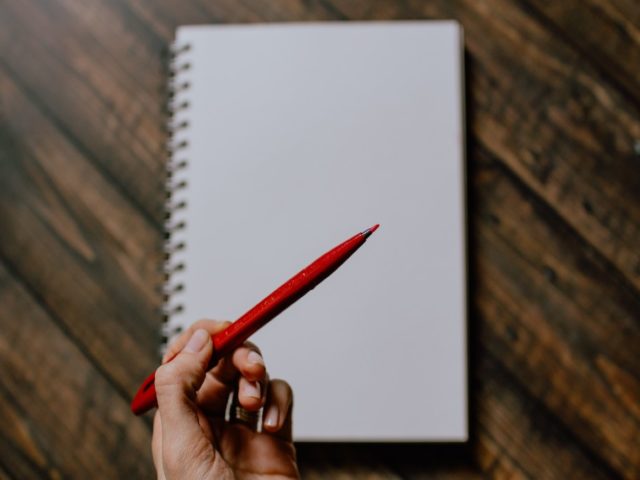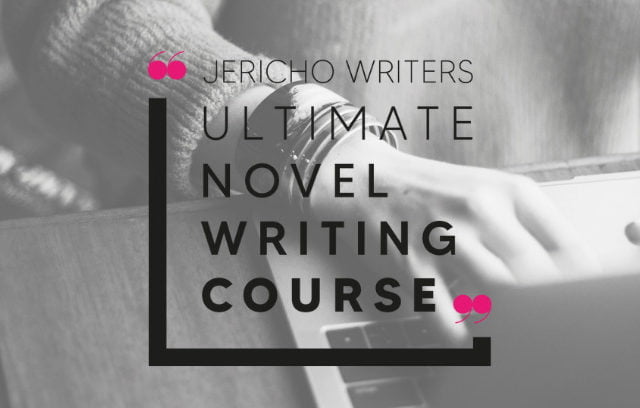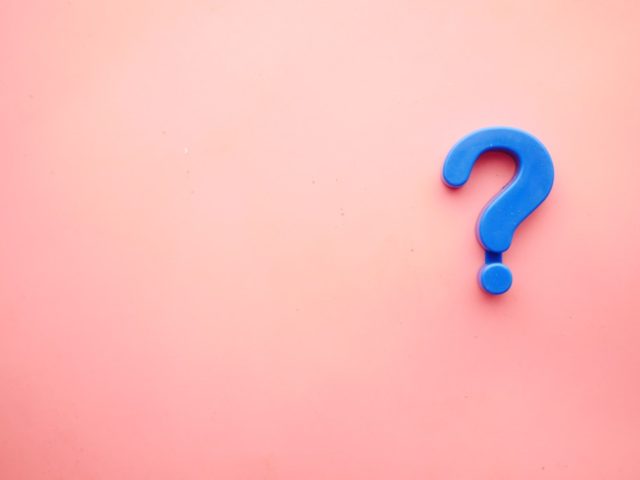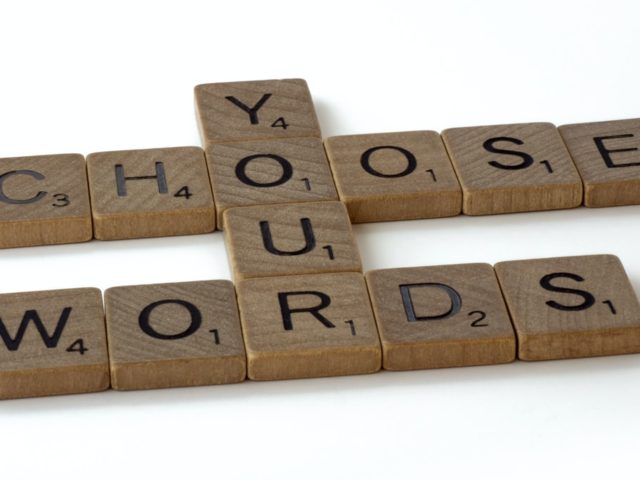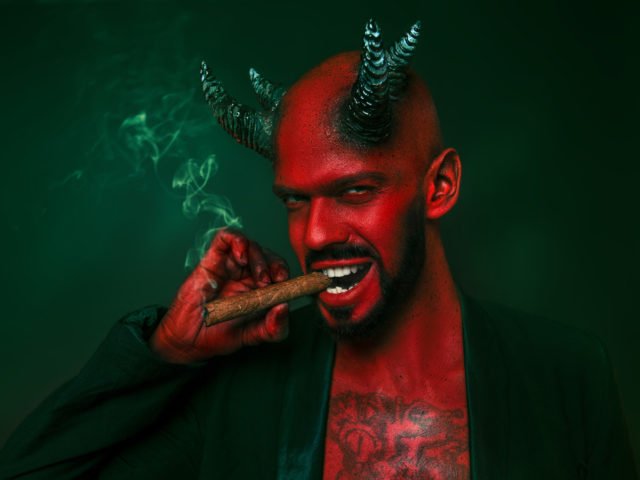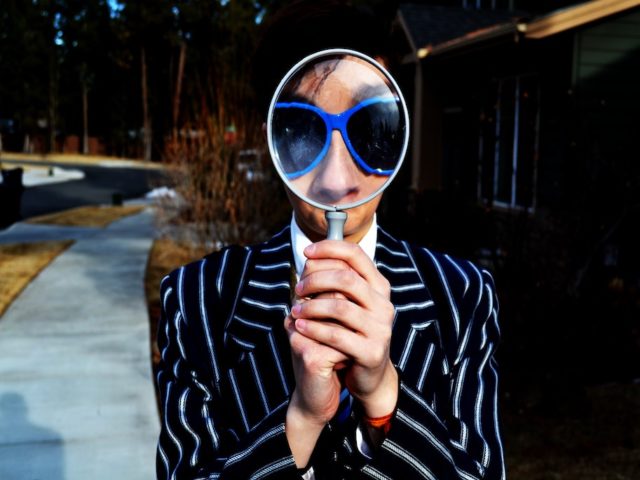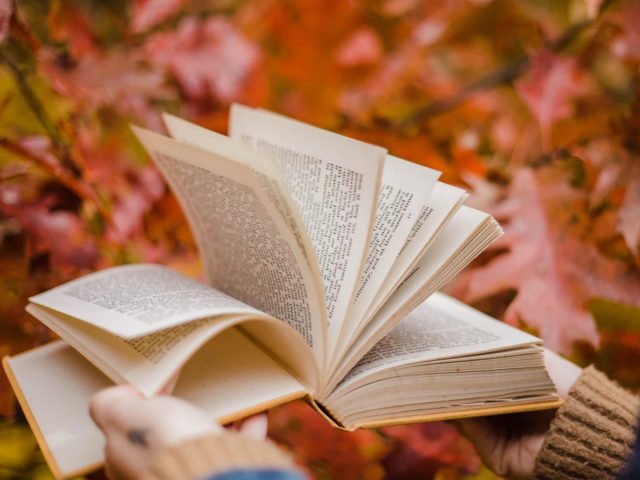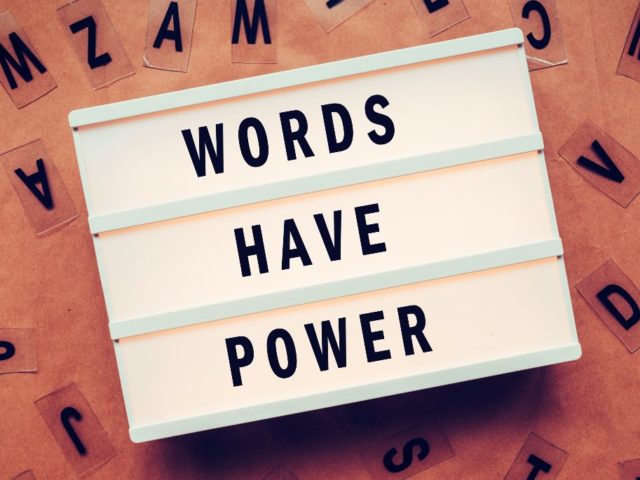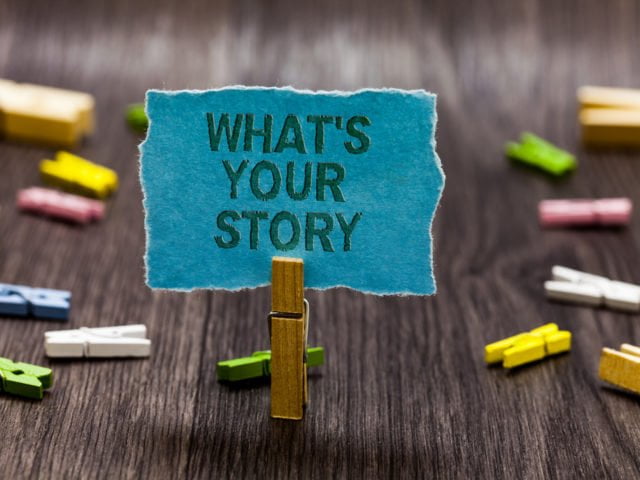In this article, I\'ll share 10 simple steps and practical pointers to help you write shorter fiction, including how to start off and how to end a short story.
For about 30 years, I slogged away trying to write a novel. But I just never had the plotting smarts or the emotional stamina, and I became like a madman running again and again at a brick wall, doing the same thing over and over and expecting a different result.
Then, one day, and only a couple of decades overdue, I had a rather marvellous thought. You’re used to writing short things – articles, web pages and the like. You’re a sprinter, not a marathon runner. Why don’t you have a go at short fiction?
As a journalist and content writer in my day job, I like a deadline. Deadlines concentrate the mind, deadlines force you to finish things. So I googled ‘short story competitions’ and found that, surprise surprise, there were actually quite a few out there, and all with a deadline.
One of my very first attempts won a modest prize (£40, I think) in a competition run by a small press. This was encouraging. I didn’t get anywhere with a story for over a year after that, but that small crumb of validation was enough to tide me over. I started writing more and more stories, and I’ve never really stopped since. I must have written over 100 by now. In 2019, a couple were nominated for the Pushcart Prize anthology in the US. And best of all, in 2020 I published my debut collection of short stories, Hotel du Jack.
I love writing short fiction, and I always have several stories on the go. But I’m still interested in getting novels published too, and my first, Work in Progress, a co-authored farcical novel-in-emails about an eccentric writers group, comes out from Unbound in 2021. I’m also putting the finishing touches to another full-length MS, working title The Wolf in the Woods.
You may have noticed that I went from failing to finish novels to writing short stories… to finishing novels. And that, I believe, is no accident. Starting on short stories is a great way to build up your writing muscles. You get the satisfaction of structuring, shaping and, above all, completing things. At first, you may find you can’t write anything over 200 or 500 words. But after a while, you suddenly realise that your stories are getting longer and more complex, as you start to experiment with ideas and forms and voices.
A short story is often not so different in length and shape from a scene in a novel, or even several scenes strung together. And one day when pondering what to write a short story about, you may find you have a different, chunkier sort of idea, one that requires more than a few thousand words to really do it justice. And maybe that day is the day you start on a novel – which you’ll now have a much better chance of finishing, with all the craft and experience that you’ve developed by completing a slew of shorter pieces.
So: in a matter of months, I went from being able to finish nothing fictional to writing scores of stories and regularly getting them featured in competitions and magazines. If you’re looking to get your short-story writing off the ground, I hope these tips and ideas of mine will help you too…
How To Write A Short Story In 10 Easy Steps
Read widely
Get a great idea
Experiment with techniques
Take inspiration from everyday life
Start writing
Add more levels to your writing
Edit, rework, revise, repeat
Focus on your beginning…
…and your ending
Recruit beta readers
Short Story: What Is It And Why Is It Special?
I’ve always loved short stories. I remember my dad reading me the stories of O’Henry when I was little, studying Maupassant’s contes of the Franco-Prussian war for A level, discovering the (now deeply unfashionable) tales of Updike, marvelling at ‘The Language of Men’ by Norman Mailer and Katherine Mansfield’s ‘The Garden Party.’ ‘Cat Woman,’ Chekhov, the ‘murdered lady’ series of Cathy Ulrich (now collected as Ghosts of You), Aimee Bender, Salinger, Nadine Gordimer, Denis Jonson, Zadie Smith, David Vann… Oh, I could go on.
Sometimes I think short fiction is closer to poetry than it is to the novel. The best short stories are little universes of compressed perfection, where every paragraph, every word, every punctuation mark has to earn its place. Short stories can be intricately plotted or they can relate little more than the movements of a mind in conversation with itself on a small domestic topic. They can be all showing or – whisper it – all telling. They can range over years or take place in a lunchtime, relating the end of a friendship or the decline of a civilisation (though the former, if we are honest, is more common). They seem, for some reason, to talk a great deal about death.
Short stories can take one tool from the fictional toolkit – voice, character, dialogue, structure, point of view, idea – and major on that, almost to the exclusion of all others. They can talk of boring or obvious topics in fresh ways, or they can deliver great weirdnesses and wild thought experiments. In short, they can do whatever they like. They just have to be true to themselves, and make us believe in them, and not go on for too long.
For length, mind, we will need our piece of string. Short stories can be 30 pages long, or they can just be a few paragraphs. If we include flash fiction here – and why wouldn’t we, though it’s almost a whole separate article – we are looking at stories that can be as short as 100 words (technically known as drabbles).
There are those who look down on flash fiction, but this I’m afraid is mere ignorance (I can say this with confidence, as I languished in this sort of ignorance myself till not so long ago). Not convinced? Try reading this or this or this or this or some of these. Flash is a distinctive sub-genre of short fiction. It is much harder than it looks, very much not just the offcuts of longer stuff, and the best exponents are very fine writers indeed.
How Do You Structure A Short Story?
There are many ways to structure a short story. You could have a beginning, a middle and an end. You could have a mini-version of the classic novel structure or one of the seven basic plots. You could have a classic sting in the tale – think of the stories of Roald Dahl or O’Henry or Saki. Or the best way to start a short story might be to just start writing – and see what shape starts to emerge. Often voice or idea is far more important than structure in a short story, and you can often retro-fix the shape once you’ve nailed those essential components first. Because short stories are, well, short, you can sometimes even plan and draft them at the same time.
Some stories read almost like anecdotes or well-crafted jokes; others appear to have no obvious plot in a novelistic sense, but are more like tableaux vivants which, like an interesting painting, reveal more meaning and information with every look. In some, like Hemingway’s ‘Hills Like White Elephants,’ nothing really appears to happen; there is talk of ‘an operation’ in a tense conversation between a couple, but the reader has to look between the lines to intuit what’s happening. All this, again, points to the wonderful fluidity and flexibility of the form.
One classic way to tell a story is what I call the Pivot structure, where you set one non-human element against another, usually human, event or relationship. Over the course of the story, the non-human element starts to tick away like a metaphor engine for the human element of the story, resonating with different meanings as the narrative develops.
For example, I’ve just read ‘Little Tiger’ by JR McMenemie, a beautiful story told from the point of view of two children who have just lost their gran. Their Mum is upset at having lost her Mum, and Dad is trying to comfort her. The kids have never been to a funeral before, and returning to their house in the aftermath is clearly a very unsettling experience for all. Mum engages in some aggressive tidying up, while Dad – who is struggling to juggle the competing claims of his children and his wife – starts laying a little heavily into the booze.
Then, all of a sudden, the kids find a butterfly, sitting on top of a picture of a beach where they all spent many holidays with gran. This is odd, as in the story it’s February, in northern England. The children feed the butterfly some banana, and are keen to make a pet of it. All of a sudden, Mum announces that the butterfly is her Mum, come back to say goodbye. In the morning, however, the kids wake to discover that the butterfly is gone; Dad explains that they couldn’t really keep it. Do you really think the butterfly was Nan? they ask. The story ends with Dad’s reply:
‘I don’t know, son. It could have been. Your mum says some funny things sometimes. All I’m saying is that your grandma didn’t like bananas.’
This crude, simplified summary doesn’t begin to do justice to the patient, emotionally intelligent storytelling of the piece, but you can see that the butterfly acts as a pivot on which the whole story can keep turning. It is, by turns, a distraction, a projection of grief, potential proof of an afterlife, an emblem of marital devotion and, in its release, a key to the processing of loss and the attainment of a certain understated resilience. Do we live on after we die? Dad is doubtful, but he loves his wife and sees no value in challenging her theory. And she, in her turn, aching with love for her absent mum, can be forgiven a little magical thinking. If, indeed, it is magical: who, after all, can be certain that she is wrong?
10 Steps To Writing A Short Story, With Examples
1. Forage The World For Story Starters
One of the attractive things about writing short stories, as opposed to longer stuff, is that you don’t need to work out a fully-fleshed outline, snowflake-style or otherwise, in order to get started. Nor do you need oodles of background words about characters, stakes, setting, timeframe and so on. You just need an idea.
And that idea doesn’t even need to be an idea in the grand sense either; it can just be a prompt. It might just be a chance remark you overheard on a bus, a funny ornament in a front garden you pass every day, an odd-looking chap you spot on a holiday beach, a sudden childhood memory. It might be a smell or a view or a colour; it might be a thought triggered by a film or a radio programme or a children’s book. Of course, it might also be a break-up you’ve never got over, a terrible act of cruelty you once witnessed, or a historical event that has always had a special resonance for you.
When you start, you won’t necessarily know what’s a story-worthy idea and what isn’t. So the first thing to do is to cultivate the habit of looking and listening, both to the outside world and to the things that bubble up in your mind. Now this might sound easy, but often it defeats people because they can’t believe it will ever get them to a finished story. We sometimes envision creativity as this wonderfully crazed, instinctive outpouring, whereas this note-taking business feels like something rather dull and premeditated.
But your notebook, whatever form it takes, is where all the raw data of your stories will start to emerge. No data: no stories. So you have to get into the habit of jotting things down, and trusting that this is a worthwhile thing to do, and just repeatedly doing it even if you don’t really believe that yet, even when your first efforts are just dreadful callow things like So here I am writing in this book or Milk, wipes, olive oil. Post office! As with a half-used tube of toothpaste, you sometimes have to squeeze the crud out to get to the good stuff.
For inspiration, try Morning Pages – as popularised by Natalie Goldberg, Julia Cameron and others. Basically, you sit down at the start of your writing session – it doesn’t even have to be morning! – and you just write down whatever comes into your head for 10 minutes. Don’t censor what pops up – just record your thoughts.
You might be amazed what occurs – shopping lists, dreams, the fag-end of a row with your partner, a glimpse of a first crush, childhood memories, strange bits of wordplay, spiritual reflections, a person in your life you haven’t thought about for ages… It’s all good, and it could all get used somewhere in your fiction. Just as the stand-up sees the world as a bunch of set-ups waiting for a punchline, so the short-fiction writer sees the world as a bunch of prompts waiting for a good story.
2. Go With The Idea That Tingles
My Dad always said that he could tell a really good piece of cheese because it gave him a funny tingly feeling behind the ears. I spent much of my childhood trying (and failing) to experience this elusive dairy-led sensation. But I do at least get the tingle when it comes to stories.
Over time, you’ll start to look at the bits of mental flotsam in your notebook, and you may find there’s a phrase or an anecdote or an image that you keep coming back to. When that happens, you may well have the first tinglings of a story on your hands.
From time to time I go back through my notebooks and highlight bits of scribble that I think I might be able to use. Sometimes it’s a setting. My story ‘The Beach Shop’ in Hotel du Jack, for example, about a heartbroken man stalking his ex-wife on her holiday, was inspired by my early-morning stops at a cafe on a French campsite. I loved the locale, and just started writing about it till a story came.
Sometimes – often in my case – it’s a bit of anecdotal autobiography. My story ‘Plane-spotting‘ was inspired by reading a story to my young son about an airport where all the planes are animals. I thought it would be funny if the Dad was a real aviation nerd, increasingly infuriated by the inaccuracy of the drawings, and it just went from there. With the flash ‘Eau de l’avenir,’ the inspiration was a smell – or rather, a scent.
To give one more example of how ideas turn into stories, George Saunders says his flash fiction ‘Sticks’ came from something he saw from his car every day. ‘For two years I’d been driving past a house like the one in the story, imagining the owner as a man more joyful and self-possessed and less self-conscious than myself. Then one day I got sick of him and invented his opposite, and there was the story.’
When you note down stuff, you don’t know if you’ll ever use it, or if you’ll end up using it several times. You may use it in a way that’s a complete betrayal of the original memory. You may dredge it up again, years later, and forget you ever jotted it down in the first place. It doesn’t matter: you’ve got it down now, and it’s adding to your imaginative store. It’s all good.
3. Try A Thought Experiment
Another way to approach a story is to ask yourself: What if…? What if supermarket shelf-fillers and nurses were the most celebrated and best-paid members of society, and celebrities and lawyers were considered the lowest of the low? What if an epidemic of kindness broke out in the world – Agapia-117, let’s call it – and threatened the stranglehold of capitalism, with its built-in systemic reliance on rabid self-interest? (Just riffing here, obvs.)
These kinds of story offer you a rich counterfactual challenge. Depending on the challenge, you might offer the reader the pleasure of watching an unexpected idea play out, or you might challenge yourself to pull off a narrative feat that the reader doesn’t know about until the end: What if (to cite a notorious example) you could tell me a whole story that turns out in the end to have been narrated by a cat? What if you wrote an alien contact story, only for us to realise at the end that the narrator lives on another planet, and the ‘aliens’ are actually humans from earth?
The idea for my story, ‘Nothing So Blue,’ came to me when I asked my son for ideas of what I could write about. ‘Write about becoming invisible,’ he said. Now sci-fi isn’t really my thing, but then I thought: ‘What if you were granted a superpower, and it turned out to be a bit rubbish?’ Now that, I thought, was very much more my thing.
A great example of the thought-experiment approach is ‘The Rememberer’, by Aimee Bender:
‘My lover is experiencing reverse evolution. I tell no one. I don’t know how it happened, only that one day he was my lover and the next he was some kind of ape. It’s been a month, and now he’s a sea turtle.’
4. Borrow A Form From Everyday Life
Structure doesn’t come naturally to us all (guilty), but an easy way to get round that is to give yourself a nice constrained timeframe, such as the hours of a day or the seven days of a week. I use this structure in a few of my stories, notably the title track of Hotel du Jack, because it offers a natural scale of narrative progression. On Monday, we meet the cast of the story and get a sense of what’s at stake. On Tuesday the first signs of conflict emerge. Wednesday sees problems escalate, Thursday brings a false dawn, and on Friday things really kick off. Saturday is the day the crisis resolves and the loose ends are tied up, and Sunday has that nice sort of epilogue feel to it. It is the day, as Craig David tells it, on which one chills; the day one rests after creating a world.
You might choose a lunch-hour, or a night, as Helen Simpson does with her insomniac narrator in ‘Erewhon’ (collected in Constitutional), a man in a roles-reversed world who stays up worrying about kids and money and sexism while his high-powered wife lies snoring indifferently next to him. It could be a date or a work meeting or a conversation between dads at the side of a junior football match, where the competitive nature of the chat echoes the changing fortunes of their kids’ respective teams and the climax of the story coincides with the final whistle.
Taking this idea a step further, hermit-crab fictions – also known as borrowed forms – are stories that are made out of everyday verbal templates. The more banal the form, the better – think product reviews, missing-person reports, recipes, maths problems, listicles, top tips, user instructions…
The trick is to try to stick quite closely to the structure you’re stealing, so that the story you tell will seem even wilder or more heartbreaking by contrast with its dull container. As you go through your day, you’ll come across thousands of these dead bits of copy – from insurance letters to FAQs to parish newsletters. Choose one, and make it your own.
I’ve written hermit-crab stories in the form of a shopping list, board game rules, FAQs and even a penalty charge notice. In Hotel du Jack, you’ll also find a ghost story told as a neighbourhood forum thread, a reflection on #metoo in the form of board meeting minutes, a meditation on grief in the form of a dishwasher glossary, and a product recall notification. Another story, ‘Active and passive voice’, dissects a flawed relationship through the structure of a grammar lesson. Meanwhile ‘My Mummy is…‘ was written – out of a sense of profound inadequacy – just after I’d read a book with my 5-year-old son at school entitled My Daddy is a Firefighter.
One of my favourites pieces of flash fiction, LIFECOLOR INDOOR LATEX PAINTS® – WHITES AND REDS by Kristen Ploetz, manages to condense an entire life into a trio of paint palettes. George Saunders has a lot of fun with this response to a customer complaint. Here’s a story of long-term love that’s also a 5-star blender review. And this story is just receipts.
If you’d like to read more hermit-crab narratives, here’s a couple of great anthologies to inspire you: Fakes by David Shields and Matthew Vollmer, and The Shell Game, edited by Kim Adrian.
5. Start Writing
If you’ve got a prompt that feels rich and interesting – whether it’s a vague memory or a thought experiment or a borrowed form – the next thing to do is not worry about how to write a good beginning of a story, and just get something down.
My process at this point is crude: just bang a first draft out. If you have an idea that feels like a start, get it down and start playing around with what happens next. If you have an idea that feels like an ending, get it down and think about how your story might get you there. But do the thinking by actual writing. This is not a drill! And this is not a novel. Just write.
As you go along, the idea will start to build and coalesce, especially as, remember, you chose something that’s already glowing and tingling for you. As the juices start flowing, you will start to see possibilities open out for you – structural bridges, snippets of dialogue, observations that you sense suddenly belong somewhere within the fabric of your story’s world. You can start to put in little headers too, little pegs to mark out future sections. Jot all these extra thoughts at the bottom of your doc, keep typing, and fold them in as you go.
Sometimes, as the story starts to flow, you may get stuck on one bit but can start to see how a later section would work. Go with the flow, and start filling in that later section instead – just leave yourself some meta-notes for the bits you need to come back to later e.g. insert scene where elephant appears for first time or add in funeral-home bit here to explain why Moira’s always hated lilies.
The same process also works at a micro-level, too. Often your ideas for the story run ahead of how quickly you can phrase things. Thinking about the broad contours of your story and fine-tuning phraseology are different creative tasks, and it’s not always easy or efficient to flit between the two. Don’t waste time waiting for the mot juste to arrive – just put in a bit placeholder copy or add some “xxxxxxxxxxxs,” and move on. Just get the broad brushstrokes down, and then you can go back and finesse the detail later.
I guess the approach I’m advocating here is a bit like ‘writing by the lights,’ a phrase that inevitably takes us back to a line from EL Doctorow: ‘Writing is like driving at night in the fog. You can only see as far as your headlights, but you can make the whole trip that way.’ Sometimes the idea you have is a perfect little synopsis, and all (!) you have to do now to flesh it out in a way that does justice to the conception. Sometimes you just have an opening scene, or an image, or a character to work with, and you have to build the rest of the world around them. But the remedy is the same in every case: get that first draft down.
The more stories you write, the more you get a sense of the optimum length for a particular piece. Some short stories are almost like extended gags; they go out and back in a simple anecdotal arc that culminates in a snappy zinger. Others require patience and stamina to deliver their potential. Their form might be much more complex: a spiral, a mosaic, a musical symphony of contrasting and resolving themes. But the best way to build up to writing complex stories is to start by completing simpler ones. And the best way to complete a story is get a first draft down fast. Then the real work can begin.
6. Work In Another Level
A satisfying story can usually be read on more than one level. There is the surface level, and then there is a sense of an underlying meaning. If your story is to feel like more than a mere skit or vignette, we want to have a sense that there is another perspective, a subtext, a theme that’s whirring away in the background as we read.
I’m not suggesting that you start with a grand theme and try and mould a story to it; that will usually lead you somewhere strained and leaden. I just mean that when you write your story, you want to have an eye on how others will find it interesting or meaningful. You don’t have to have a pat answer to this question, quite the opposite in fact. Where novels often build up to an accumulated truth, the best stories often have an inconclusive, open-ended quality.
Often in life, when you think about it, we are working through familiar challenges and conflicts in a variety of different guises and permutations: freedom versus commitment, future hopes versus mortality, child versus parent, addiction versus abstention, ego versus altruism – the list is endless. What short stories often do is replay one of these central conflicts for us in a way that is both very specific – involving particular individuals in detailed interactions – but also has a timeless, universalising feel to it. Life is ambiguity, and things rarely get resolved. So, as your story takes shape, ask yourself: which pattern am I enacting here?
This might sound a bit complex, but really it’s very simple, because every story we tell inevitably has the potential to speak beyond its own obvious remit; the trick is just to polish your words in the light of their wider applicability. As you start to get your story down, have an eye on the meanings and themes that emerge with it, and shape your material accordingly. You don’t have to be able to say what the story is really about; you just need to leave enough space and enough interesting glimmers for the reader to want to fill in the blanks.
Take, for example, Conrad’s ‘The Secret Sharer.‘ This rich and subtle tale is full of nautical detail and has the feel of being based on a true incident, lightly fictionalised. But Conrad is careful throughout to dial up the elements we can all relate to: the fear of not being good enough, the loneliness of command, the terror of being brave, and so on.
Katherine Mansfield’s ‘The Fly’ – as well as being a pair of beautifully observed little scenes – speaks to us about bereavement, and the agony of a loss which can no longer even find expression. And in retrospect, we see that JD Salinger’s ‘A Perfect Day for Bananafish’ – for all its enjoyable elements of comedy and social satire – speaks also to the corrosive effects of trauma and the inadequacy of our responses to it.
7. Edit. Revise. Rework. Repeat.
Writing, as so many have said, is re-writing. Now that you have a rough draft down, the real work can begin, as you hone and polish and finesse your story into the best story it can be, and remove in the process all avoidable friction from the reading process. A few pointers:
Look hard at the movement and logic of the story. Read the story out loud to yourself, and see if it makes good narrative sense. Is the middle soggy? Are there any tedious info dumps? Is there too much telling at the expense of showing? Is there a good balance between different sections and viewpoints (if you have more than one)? Is the story long enough, or do you rush to the conclusion and throw the ending away?
Look out for redundancies. Strip away phrases, sentences and even sections that don’t add anything to the mood or voice or development of the story. Murder your darlings – all those bits (phrases, plot points, devices etc) that you’re really fond of but don’t really fit into the texture of the story you have developed.
Add in clarifications and bridges. Editing isn’t just taking things away. Sometimes it’s about adding things too. If a transition between two sections isn’t clear, or your intro throws up a commonsensical question that you don’t ever answer, the reader will be too busy scratching their head to fully appreciate your story. Sometimes just a clarifying phrase here or a subtle time or place reference there can be all it takes.
Look for words and phrases that you know you over-use. I’m a sucker for ‘suddenly,’ ‘seemed,’ ‘now’ and ‘screenwash’. I have certain pet thoughts and jokes that, if left to my own devices, I will happily try and shoehorn into everything I write. Watch out for ‘had’ too – if half your story is in the form of a past-perfect flashback, that’s probably going to be a problem. See more tips on self-editing here.
8. Look Extra Hard at Your Start…
The start of your story needs to work hard to lure us into the world of your narrative. It must intrigue us from the off. We want to feel instantly that we are in an interesting place, where interesting things may happen, and that we can trust and enjoy the person who is telling us about them. Ambiguity, cliche, long-windedness, unnecessary cleverness – these can all spell death to a good intro.
You might start with an intriguing hook (‘In the beginning, Sanford Carter was ashamed of becoming an Army cook’ – ‘The Language of Men’, by Norman Mailer.) You might set the scene with a sweep of historical backdrop (‘Paris was blockaded, starved, in its death agony’ – ‘Deux Amis’, by Maupassant.)
Or you might start by setting the rules of the world, as in ‘By the Waters of Babylon’ by Stephen Vincent Benét, in a way that has the reader wondering from the very start what will happen if one is broken:
‘The north and the west and the south are good hunting ground, but it is forbidden to go east. It is forbidden to go to any of the Dead Places except to search for metal and then he who touches the metal must be a priest or the son of a priest.’
Naturally I am instantly curious about what happens if I head east. And the Dead Places? These are things I need to know about.
For more on this topic, see my 10 examples of how to start a short story.
9. …And Look Extra Hard at Your Ending
You need to bring your story to a conclusion in a satisfying way that is of a piece with the style and mood of the narrative that you have created. If you have written a taut, sting-in-the-tale mystery, the ending should close things off with a satisfying snap that tells us the case is closed and justice – consistent in some way or other with the internal logic of your piece – has been served.
A story that is more reflective and interior in tone, on the other hand, will ideally finish with a line that adds a new perspective or dimension to our understanding of the whole, and keeps rippling and resonating in the reader’s mind long after they have finished reading.
The ending can be a shock to the system that makes sense of everything that’s gone before; ‘A Perfect Day for Bananafish’ is an obvious and powerful example of this. Or it can zoom away from the action, just as a camera takes leave of its subject. Or it can inject a twist that calls into doubt everything you’ve read so far. It can sometimes be read two different ways, leaving the reader to work out their own ending.
And it can of course just show that the world keeps on turning. My ‘Ella G in a Country Churchyard’, for example, brings a story of an uncomfortable parent-child conversation about mortality to a close with the Dad asking: ‘Ready for some sausages?’ This could be seen as an evasion, but then again there are no adequate answers to the girl’s impossible questions about what happens when we die. Life goes on, and it is almost teatime.
10. Get Another View
Don’t send out the story to any magazine or competition until someone else has read it and fed back to you. And not just anyone, but someone whose judgement you respect, and who can give a candid take on what’s working and what isn’t.
You may have a trusted beta reader – perhaps your partner, or a relative or friend – who always reads your stuff, or you may get feedback from a Facebook group. And of course there’s the Townhouse. These are great resources, but in my experience nothing beats being part of a real-life writers’ group.
In a writers’ group, you’ll have the experience of reading your words to others – itself often very instructive, as you can often sense where the story is working and where it’s dragging just from the quality of attention in the room. And you’ll get constructive, practical feedback from people who are dealing with the same challenges, albeit from different perspectives and genres. Short stories lend themselves particularly well to group critique, because they are often just the right length to read in full.
No doubt there will be feedback – from yourself as well as from others – and you will need to decide which bits you want to act on and which, not: learning the difference is a lifetime’s work. Inevitably you will find yourself returning to step 7, and perhaps steps 8 and 9 too, but that’s no bad thing. Writing is re-writing, remember.
How Do You Write A Short Story in One Day? Can you Write A Short Story in One Day?
Yes! It’s perfectly possible to write a story in a day, or less. Sometimes, when you get a great idea, the piece – especially it’s a flash or shorter fiction – may emerge fully formed.
That’s not to say you’ve only been working on it that day – in my case, a story might get drafted in a couple of hours that I’ve been turning over in the back of my mind for a couple of years.
And that’s not to say it’ll be the final version either. While you might be able to complete the draft in a day, it’s always wise to sleep on it and come back to it next day, to review and revise, and to get some other people’s feedback too.
Publishing Your Short Story
So, you’ve written your short story, but what next?
There are loads of litmags and competitions out there. Many of the editors and organisers are aspiring writers themselves, and can be wonderfully supportive with feedback even when they’re not able to accept your story. You can find useful lists here, here and here.
Sometimes there’s a prompt or a theme, which can be a great help when you’re stuck for an idea. With magazines, take some time to read a few stories and get a feel for what they like, and whether you’d be a good fit. Simultaneous submissions are generally acceptable, especially as it can take months to get a response (just make sure you let them know if you get accepted elsewhere). Before you enter, always read the requirements carefully, and get the formatting and labelling right.
Have lots of stories on the go, so you move on when you get stuck. ‘At any given moment, I have a half-dozen story ideas shelved in my mind,’ says Benjamin Percy, author of the collections The Language of Elk and Refresh, Refresh. ‘I always choose to write the one that glows brightest.’
Above all, don’t be afraid to keep submitting. For most of us, rejection is the norm and an acceptance is the exception. The more you submit, the luckier you’ll get, and the less those rejections will sting.
You can do this!







